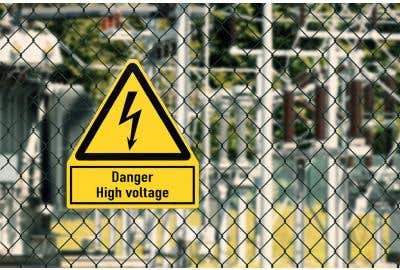Electrical Safety Best Practices


If your team is required to work with or near electrical equipment, an electrical safety risk assessment should be at the top of your to-do list. Although electrical fatalities have been steadily declining over the past two decades, job related electrical fatalities still average more that 125 per year over the last 3+ decades, including 160 reported in the U.S. in 2018. To help decrease that number, here’s an overview of electrical safety basics based on the experience and knowledge of our SMEs we teach in our ClickSafety courses, including the use of strong programs like lockout/tagout.
The Basics of Worksite Electrical Safety
Dynamic electricity, which is the kind that flows through your phone charger and other plug-in systems, is the movement of electrons through a conductor. In these systems, electricity takes the easiest path back to its power source in order to complete an electrical circuit.
Human bodies are conductors of electricity. As a result, if we come into contact with electricity, and there is no easier path to ground, it will attempt to flow through our bodies. This can result in one or more types of electrical injuries, including:
- Electric Shock: This dangerous injury occurs when electricity is very suddenly discharged through a part of your body. This often happens by coming into direct contact with electrical current. It is not uncommon for a shock to startle a worker, causing an involuntary muscle spasm which creates additional hazards like falls from heights.
- Electrocution: When someone is shocked, the electricity that enters their body is strong enough to interrupt the natural electrical signals sent between the human brain and muscles. This can cause muscle spasms, it can cause the heart to stop, or possibly lead to death.
- Burns: Thermal burns can occur from the heat generated by an electrical arc or an electrical fire.
These risks make it important for managers and supervisors to be aware of potential hazards in their workplace and understand how to prevent electrical injuries from occurring.
Electrical Safety Best Practices
Electrical devices and systems are a necessary part of most occupations, following procedures and education employees is the key to preventing electrical injury. Below are several best practices that you and your workers should be aware of to reduce risk of electrical, including:
- Employee Training: A critical element of an electrical safety program is training. If employees are not trained to understand the hazards, recognize the warning signs, and acknowledge their role in electrical safety, the risk of electrical related incidents and injuries increases immensely. Employees at all levels, from licensed electricians to basic level employees must all received a level of training to educate on risk and exposure and how to avoid on-the-job injury.
- Electrical Safe Work Practices: Electrical Safe Work Practices (ESWP) are required for employers and often is the core of the electrical safety program. The practices and procedures identified in the program must be communicated to the workforce to prevent shock or injuries from contact (direct or indirect) with electrically charged equipment or circuits.
- Damaged Equipment: Routine inspection of electrical equipment, including extension cords, power bars, and electrical fittings, is critical. Equipment should be inspected prior to use as well as part of a routine preventative maintenance program. If a cord has an exposed wire or a missing prong, communicate the need for replacement, if electrical cabinets are missing doors or have open knockouts, alert the maintenance team. If electrical work is being performed in wet conditions or circuits, outlets or similar equipment is overloaded, having the training to recognize and communicate that hazard is key to a safe workplace.
- Lockout/Tagout (LOTO): LOTO (29 CFR 1910.147) is a program regulated by OSHA. The equipment utilized in the LOTO process works to control hazardous energy sources to a piece of equipment being worked on or taken out of service. It helps keep personnel safe from electrical hazards providing a system (locks and tags) which communicates electrical hazards are present. Only authorized and trained individuals must apply and remove lockout tagout devices. These devices should serve as warning to those affected employees working in the area that equipment is not to be touched, turned on or operated.
- Safety Signage & Labeling: Because electrical hazards can rarely be seen, communication of hazards is critical in protecting employees from approaching a hazardous situation. Employees should be trained to recognize and obey safety signage (including symbols) identifying hazards, dictating safe boundary limits, etc. Labeling of electrical conductors and equipment, such as electrical cabinets, voltage lines, must be part of a company’s electrical safety program.
- First Aid: An injury resulting from electrical shock will always need medical attention. It is important to recognize the symptoms and understand how best to keep yourself safe while making sure the injured party receives the help they need. It is important to turn off the electricity, do not touch the person while electricity is still moving and don’t move the injured party even when the current has stopped flowing. Follow the advice of trained professionals prior to treating a wound or attempting to perform first aid or CPR.
Be Prepared Before an Electrical Injury Occurs
It can be tricky or even impossible to anticipate workplace accidents, especially electrical incidents. But by being mindful of best practices, your team can avoid potential hazards and help reduce the incidence of workplace injury. To train your team in all aspects of workplace safety, register for our ClickSafety Safety Training Packs by contacting us today.

